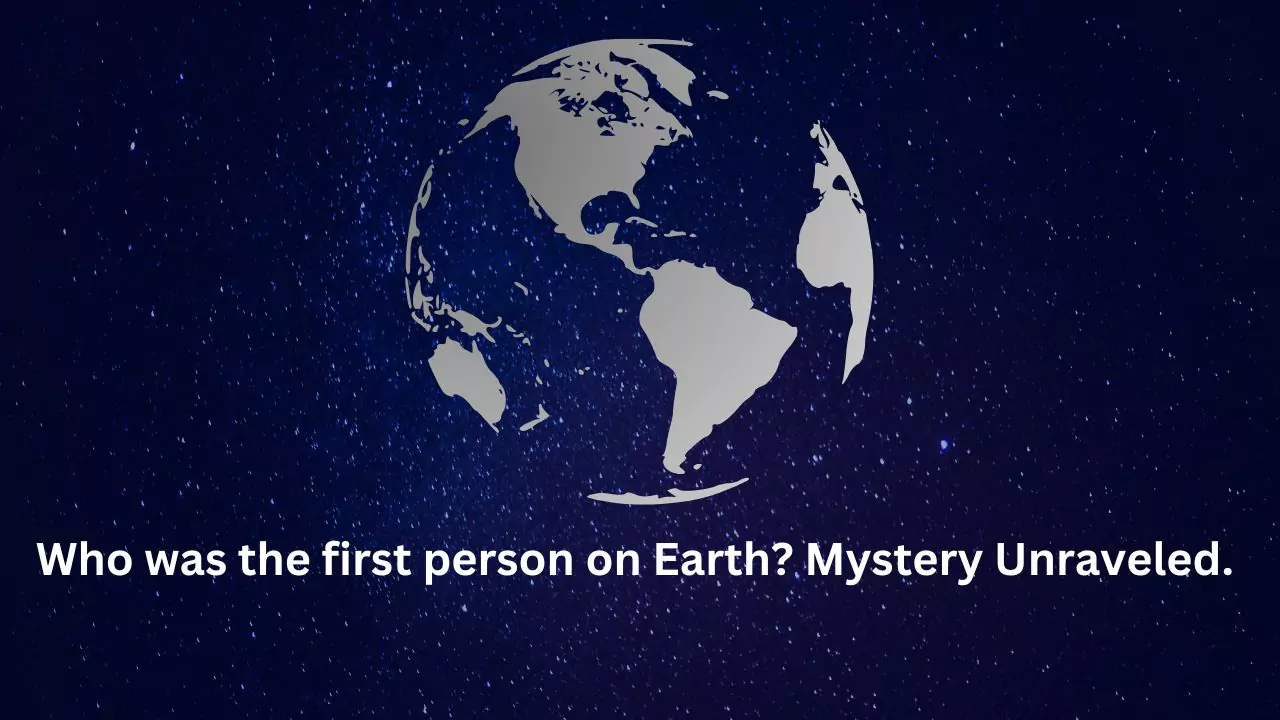Who was the first person on Earth?
Table of Contents
Who was the first person on Earth?
Scientific Views on Human Origins
“Who was the first person on Earth?” uncovering the mystery. Thanks to paleoanthropology, archaeology and genetics, scientists have gained substantial insight into the story of our forebears.
Key findings: fossil material and its significance
“Who was the very first person on Earth?” has been revealed by other major fossil finds. In 1967, Richard Leakey and a team of paleoanthropologists discovered two Homo sapiens fossils, Omo I and Omo II, in the Omo Kibish conformation, Ethiopia. These fossils, dated to roughly 195,000 times agone, are the oldest-known remains of anatomically ultramodern humans.
Herto skulls —Herto skulls found in Ethiopia in 1997. These skulls, dating to around 160,000 years ago, show a blend of archaic and modern features, indicating an intermediate state in the evolution of humans.
The Role of Genetics: Tracing Human Ancestry
Role of genetics in finding Who was the first person on Earth?: Mitochondrial DNA (mtDNA), which is Materially inherited, makes up a gene trail tracing humankind’s shared ancestry to its putative common ancestor. Although Mitochondrial Eve was not the only woman living at that time, she is the only woman whose mtDNA lineage has survived to the present day. This idea is of particular import to the question.
Who first walked on the Earth? by giving a genetic relation to our earliest ancestors. On the other hand, the reconstruction of Y-chromosomal Adam, the most recent common paternal ancestor, along with the one from mtDNA, is used in the present study. Adam carrying Y-chromosome has been inferred to have lived in Africa ~2-3 hundred thousands years ago. Synergistically, these genetic data support the “Out of Africa” hypothesis, proposing that modern humans emerged in Africa and then dispersed worldwide.
The First Homo Sapiens: Evolution and Characteristics
Role of Homo Sapiens in finding answer Who was the first person on Earth?: Adaptive changes in anatomy and behavior played a major role in the shift to Homo sapiens. Such anatomical characteristics are apparent in the oldest dated homo sapiens fossils, e.g., from the Jebel Irhoud of Morocco, about 300,000 YBP ago [2]. These fossils show archaic and modern features respectively, representing the evolutionary transition from archaic to modern human.
The Correlation Between Science and Myth
There are questions in science such as ‘who is the first ever human being that walked this earth?’ and even though science has an absolute answer to the question, it still intriguing to understand the way religion and mythology relates to the 3rd millennium bc. Additionally, a great number of cultural myths, despite their diversity, share points such as the ideas about the last universal ancestor and about a specific location on earth from where humanity emerged. The myth of Adam and Eve. While it is biologically impossible, it represents the concept of a beginning in the life of mankind.
It is indeed remarkable how some scientific inventions correlate with ancient history. One such instance is the “Out of Africa” theory which coincides with African creation myths that pertain to the origin of humans stemming from the middle of Africa. These relationships, in turn, demonstrate the recurrent human curiosity regarding origins and the reason of one’s existence within the context of a consuming universe. The Never Ending Search For Truth.
Who was the first person on Earth? This quest is by no means a solved issue. Due to improvement in techniques and methods of research, we are learning more about our roots. Recent evidence finds, for instance, the Denisovans and their place in the complete human genarare support the idea that human evolution is very nuanced. A finger bone and teeth were identified using a DNA examination resulting in the identifying of the Denisovans.
Future directions in the study of ancient humans
The further discoveries of fossils and advances in the genetic repertoire we will come to appreciate the why and how of “who was the first of person on earth”.
Evolutionary path. Also, the interdisciplinary studies involving archaeology, genetics and anthropology will allow a more holistic view of our ancestry.
The preservation and study of ancient sites and fossils play an essential role in the further development of knowledge. Efforts to preserve these irreplaceable resources guarantee that posterity will be able to continue research on human origins. Public engagement and education are also essential in developing appreciation for our common heritage and the scientific work of peeling it back.The Role of Genetics: Tracing Human Ancestry
Mitochondrial DNA (mtDNA), which is Materially inherited, makes up a gene trail tracing humankind’s shared ancestry to its putative common ancestor. Although Mitochondrial Eve was not the only woman living at that time, she is the only woman whose mtDNA lineage has survived to the present day. On the other hand, the reconstruction of Y-chromosomal Adam, the most recent common paternal ancestor, along with the one from mtDNA, is used in the present study. Adam carrying Y-chromosome has been inferred to have lived in Africa ~2-3 hundred thousands years ago. Synergistically, these genetic data support the “Out of Africa” hypothesis, proposing that modern humans emerged in Africa and then dispersed worldwide.
Conclusion
Using paleoanthropology, genetics, and the analysis on the ancient Homo sapiens, we have unearthed valuable conclusions about our ancestors. Myth and religion offer rich cultural singularity, but it is science that offers the empirical canvas on which to paint our origins. The current search for knowledge has the potential to further us in the understanding of more remote times and give us a greater sense of what mysteries surrounded the first man to walk on the earth by captivating and enthusing from generation to generation.
[ratings]

